Outer Space & Universe
Outer Space & Universe
Space, also known as outer space, is the near-vacuum between celestial bodies. It is where everything (all of the planets, stars, galaxies and other objects) is found.
On Earth, space begins at the Kármán line (100 km above sea level). This is where Earth's atmosphere is said to stop and outer space begins. This is not a firm boundary but is a convention used by scientists and diplomats.
Items in space are free to move back and forth; up and down; and left and right. These three dimensions are what make 3D space. Items also move forward through time, which is sometimes called the fourth dimension.
The majority of space contains very little matter and so most of it is a vacuum. Scientists do not know how big space is but we do know that space is extremely big, and is always expanding.
According to the big bang theory, all matter and energy in the Universe was compressed into a very small space. Then it exploded and started expanding. Space is still growing in size today; this means the distance from one galaxy to distant galaxies is getting longer.
Gravity is the force that keeps the Moon in orbit around the Earth and the planets in orbit around the Sun. Gravity can stretch and bend space similar to how a heavy ball placed on a stretched sheet of rubber will cause the rubber to stretch. The scientist who discovered that space can bend is named Albert Einstein. How gravity bends space is part of his theory of general relativity.
Astronauts, Cosmonauts, Taikonauts and Spationauts
An astronaut is any person who is trained by NASA to travel and perform tasks in space. Although the space traveler may not necessarily be a United States citizen, each astronaut does go through a rigorous training regiment by the National Aeronautics and Space Administration. Other space travelers go by other names then astronaut depending on their country of origin.
In the United States, astronaut is derived from the Greek words ástron (star) and nautis (sailor). While, in Russia, a space traveler goes by the name космонавт (English: cosmonaut), which is derived from the Greek words kosmos (universe) and nautis (sailor). Westerners call a space traveler from China a taikonaut, based on the 1998 writings of Chiew Lee Yik and Chen Lan where the term tàikōng (great emptiness), Chinese for “space”. In China, the term yuháng yuán (universe navigator) is used for space traveler.
Only the United States of America (United States), Russia (earlier, the Union of Soviet Socialist Republics), and the People’s Republic of China (China) have sent manned spacecraft into space. Other countries have assisted these countries by sending their own space travelers on space missions. For instance, a French space traveler is called a spationaut (from the French word spationaute), which is derived from the Latin spatium (space) and Greek nautis (sailor). (plural in Greek nautes = sailors)
-
00:57
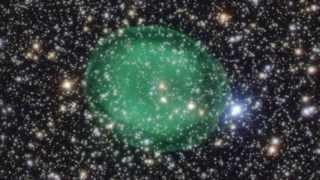
'Green Bubble' Planetary Nebula Seen In Greatest Detail Yet | Video
Added 723 Views / 0 LikesEurope's Very Large Telescope captured imagery of planetary nebula IC 1295. It can be found in the constellation of Scutum (3300 light years away).
-
04:04
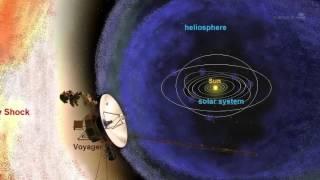
Sun's Magnetic Field Will Soon Flip - Stormy Space Weather Ahead? | Video
Added 731 Views / 0 LikesDuring the height of the solar cycle, the magnetic field changes polarity, pushing a ripple effect across the Solar System that's detectable by even the far-away Voyager probes.
-
01:10
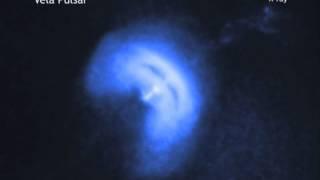
Fast Spinning Pulsar's Wobbles Whip-Up Plasma Jets | Video
Added 727 Views / 0 LikesJust 12 miles across, a collapsed star 1000 light years from Earth spins more than 11 times each second. The Vela pulsar belches charged particles at 70% of light-speed, seen here in this 8-frame movie from the space-based Chandra X-ray Observatory.
-
00:39
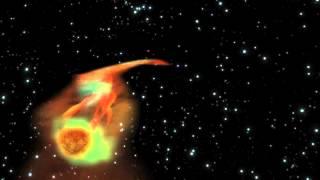
Black Hole Snacks On A Super-Jupiter | Animation
Added 719 Views / 0 LikesAstronomers have detected a black hole consuming the outer layers of a brown dwarf or a giant planet. Observations of galaxy NGC 4845 by ESA's Integral Space Observatory and XMM-Newton revealed an x-ray flare consistent with black hole activity.
-
04:25
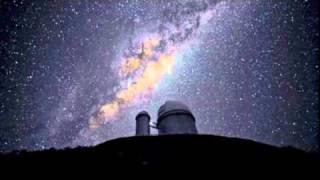
16 New Super-Earths Just Discovered
Added 721 Views / 0 LikesAstronomers using Europe's HARPS telescope have discovered 50 new exoplanets orbiting nearby stars - including these 16 super-Earths, one of which lies within its star's habitable zone.
-
04:49
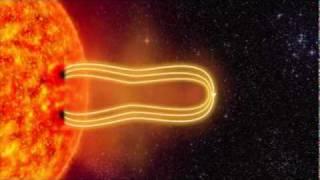
Fantastic Aurora: Inside the Sun to Earth's Poles
Added 681 Views / 0 LikesPlasma from solar flares or coronal mass ejections travel along solar wind to ultimately produce aurora's in Earth's polar regions. This visually stunning explanatory video takes you on a journey from sun's interior to the Earth's upper atmosphere. Credit
-
00:54
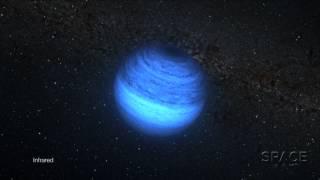
Rogue Planet Has No Parent Star | Video
Added 633 Views / 0 LikesAstronomers have discovered a "rogue planet" (no, NOT Nibiru!) that seems to be travelling with a set of young stars -- called the AB Doradus Moving Group -- but isn't orbiting any of them. If it's part of that family, scientists can gauge
-
02:07
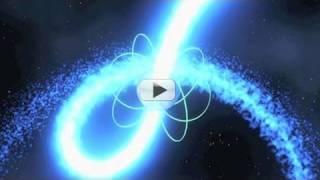
Massive Diamond Planet Orbits Neutron Star, Astronomers Find
Added 697 Views / 0 LikesUsing the giant Parkes Radio Telescope in New South Wales, Australia, astrophysicists have found an incredibly dense planet comprised of crystalized carbon -- the stuff of diamonds -- in orbit about a pulsar.
-
01:34
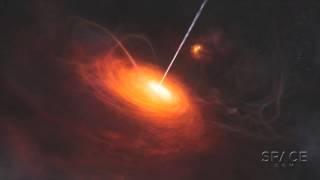
Most Powerful Quasar Discovered | Video
Added 862 Views / 0 LikesAstronomers have found a quasar that's more than five times more powerful than any previously seen. Quasars are mega-bright geysers of matter and energy powered by super-massive black holes at the centers of young galaxies.
-
01:17
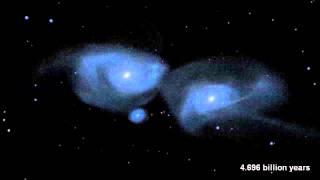
Milky Way and Andromeda Galaxies Collision Simulated | Video
Added 819 Views / 0 LikesUsing data from the Hubble Space Telescope, scientists have developed this simulation of the head-on collision of our Milky Way galaxy and the Andromeda galaxy. Estimated to occur in 4 billion years.
-
01:50
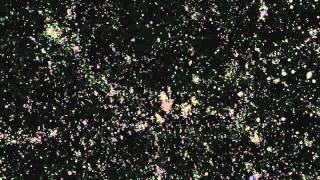
Amazing Universe Fly-Through: Largest Sky Map Revealed | Video
Added 681 Views / 0 LikesNearly 400,000 galaxies are represented in an animation derived from the Sloan Digital Sky Survey (SDSS) data release 7. Miguel Arago and Alex Szalay of John Hopkins University and Mark Subbarao of the Adler Planetarium created this amazing view.
-
00:26
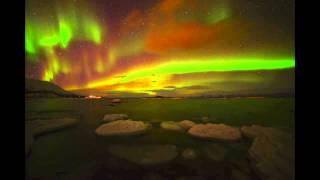
Red and Green 'Christmas' Auroras Light Up Skies Over Sweden | Video
Added 808 Views / 0 LikesChad Blakley (lightsoverlapland.com) grabbed his camera on Christmas Day 2013 and captured the festive Northern Lights above the frozen shore of Lake Torneträsk in Abisko National Park.
-
00:37
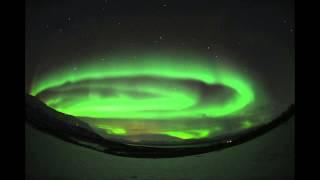
Severe Solar Weather Creates Astonishing Auroras In Abisko National Park | Video
Added 670 Views / 0 LikesSevere solar winds created these awe-inspiring auroras in Abisko National Park in Sweden, captured by Chad Blakley http://lightsoverlapland.com on January 2nd.
-
01:03
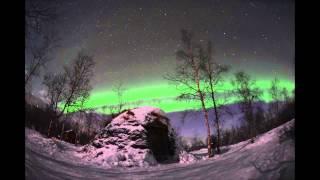
Hyper-Active Sun Delivering Dazzling Auroras In The North | Video
Added 693 Views / 0 LikesChad Blakley (lightsoverlapland.com) captured the intense northern lights over Abisko National Park in norther Sweden on January 7th, 2014. The powerful Solar x-flare on the same day may deliver auroras even further south by Jan. 9th.
-
01:34
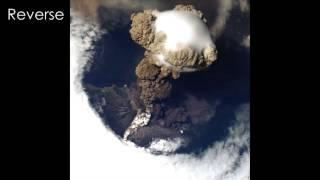
Volcanic Eruption Snapped From Space | New Video Visualization
Added 797 Views / 1 LikesOn June 12, 2009, the Sarychev Volcano, on Matua Island, northeast of Japan, erupted explosively as it has previously in 1989, 1986, 1976 and 1946. An ISS astronaut grabbed this shot, recently processed into animation by NASA.
-
01:27
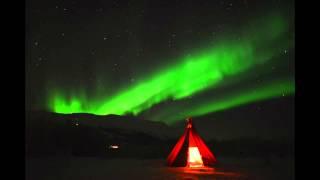
Aurora Photographer 'Blown Away' By Latest Display Over Sweden | Time-Lapse Video
Added 693 Views / 0 LikesOn Feb 1st, 2014, Chad Blakley (lightsoverlapland.com) captured what he describes as a memory "that will forever live in the the minds of everyone that was luck enough to see the show in person". The auroras are seen this stunning time-lapse.
-
01:09
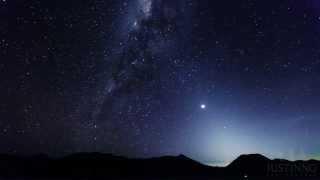
Rare Zodiacal Light + Milky Way Backlight 3 Volcanoes | Timelapse Video
Added 657 Views / 0 LikesPhotographer Justin Ng captured the glow of inner solar system dust scattering sunlight over 3 Indonesian volcanoes, the active Semeru and Bromo plus the dormant Batok. Planets Venus, Saturn and Mercury lie within this field of view.
-
02:18
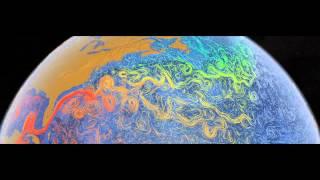
Planet Earth From Space - NASA's 2012 Highlight Video
Added 700 Views / 0 LikesNASA has compiled some of the best imagery attained of our world in 2012. Imagery and animations from the Space Station and multiple Earth observing missions were used.
-
00:46
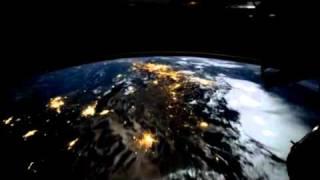
Over Earth: What Night-Flying the ISS Looks Like
Added 591 Views / 0 LikesNature-made lightning -- and man-made lighting -- enhance this surreal time-lapse view from the International Space Station. The video was created using astronaut photography that anyone may download.
-
02:12
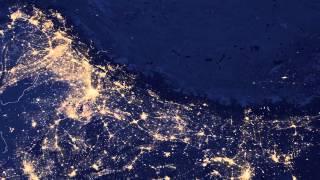
Earth Night Lights - Unprecedented Detection From Space | Video
Added 727 Views / 0 LikesUsing data from the Suomi NPP satellite, the Earth at night is seen ever so clearly. The light detection instrumentation is ten to hundreds of times better than previous capabilities.
